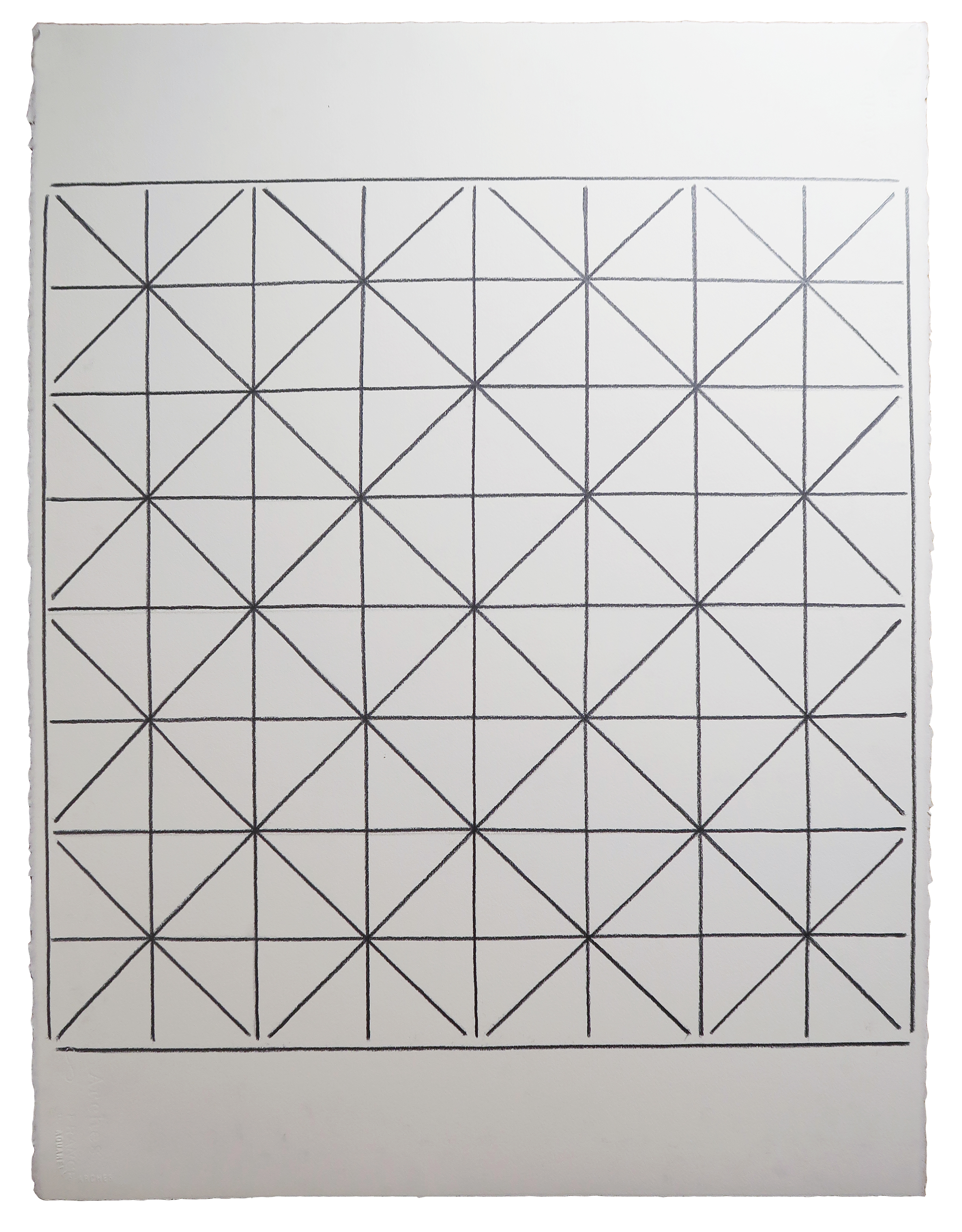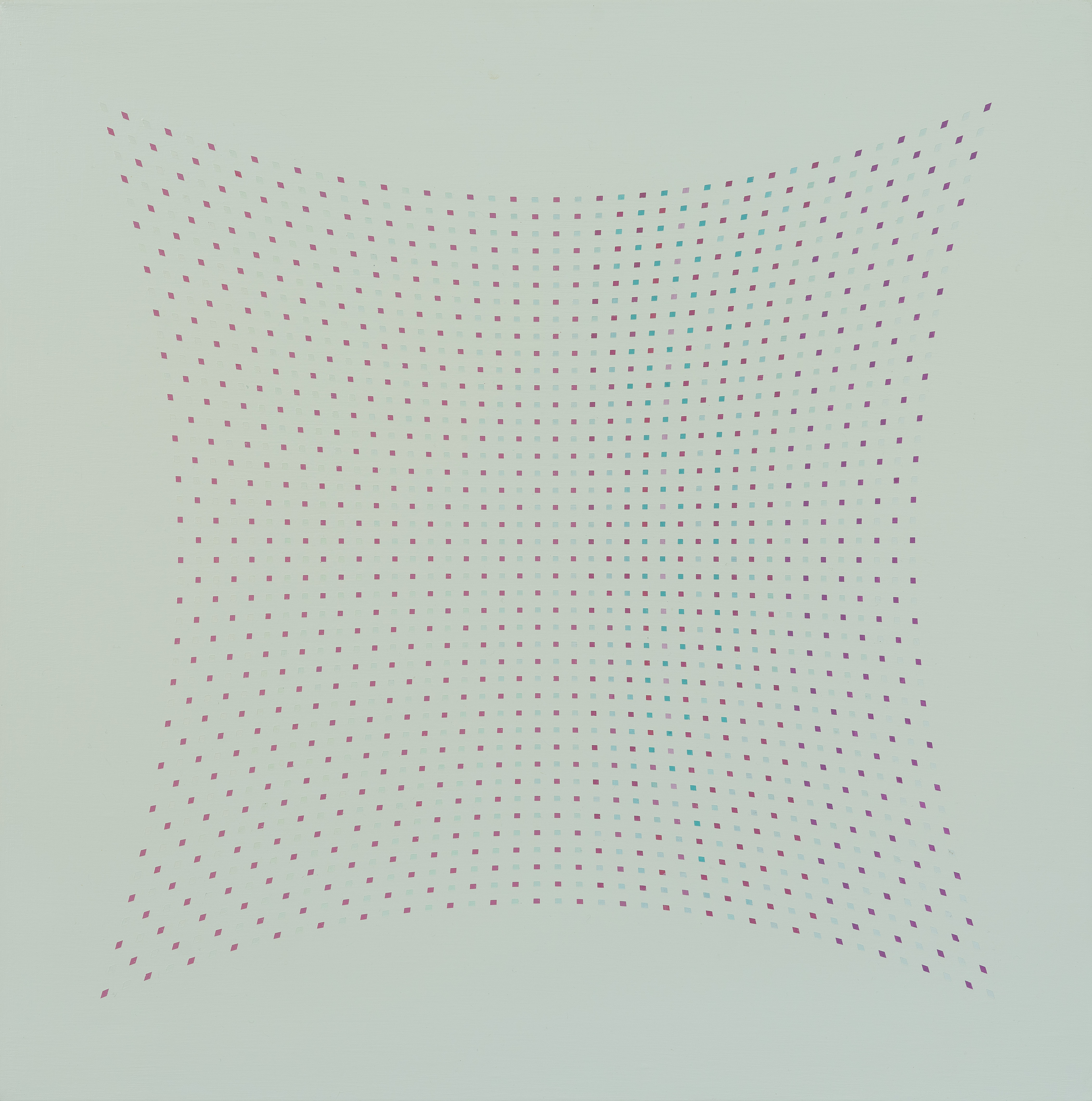Celestial Mechanics: Tess Jaray, Linda Karshan, Jeanne Masoero
41 Dover Street
3rd – 27th October 2017
Co-curated with Blair Asbury Brooks
The cosmos has been the subject of scientific and artistic exploration for centuries. Humanity has sought to look beyond its terrestrial realm and has made technologies to photograph, measure and visit space. This quest is subject matter for many artists, as are the products of astronomy, such as photographs of constellations. The cosmos itself also serves as an organising principle for some artists. This keeps with the cosmos’ original meaning, referring to the orderly and harmonious systems of the universe. Key to these investigations of the cosmos is the concept of infinity: how can something without an end be understood, let alone represented? What patterns, colours and marks engage this question? This exhibition will explore contemporary visual articulations of the cosmos through the work of three artists.
The exhibition takes its name from Jeanne Masoero’s most recent, ongoing series. Masoero is primarily concerned with light, colour and spatial depth. Her paintings tussle with the concept of endlessness, playing with tiny specks of colour and undefined, fissured edges – ‘force fields’, as she refers to them. The Hubble Telescope’s images of the cosmos act as a bible of source material for Masoero, highlighting that the stars we see are only an ‘infinitesimal fraction of the billions that inhabit our galaxy.’
Linda Karshan creates work saturated with intuitive energy. Karshan’s performative method of working began in 1994. Her methodical, yet visceral, monochromatic drawings are an example of Karshan listening to her ‘inner choreography’. Like each artist in this exhibition, Karshan’s configuration of intersecting lines, grids and repetitive marks, take inspiration from Plato’s theory that our universe is one of numerical order. Every mark is a direct reaction to her rhythmic breathing and counter-clockwise turning of the paper, resulting in abstract footage of the ritualistic way her body experiences time and space.
Tess Jaray’s subtle paintings seem visually related to places that are invisible to the human eye. Jaray has always been fascinated by the order of the universe, metaphysics and concepts of space and her work translates ‘the seemingly infinite formlessness of the universe’ into visual form. Jaray’s work plays with tensions between dimensions, shape and colour, encouraging the viewer to ask, what are we looking at? These works, selected from her series Many Moments, posit that the unobtainable, sublime nature of the universe can perhaps be reflected through painting.
While all three artists engage with celestial themes, their work is also characterised by evidence of the artist’s hand and actions. Masoero’s time-intensive process is evident in the colourful, diverse marks, precisely placed on pristine white backgrounds. The weight and movement of Karshan’s body, directly affects the thickness and density of the line drawn on the paper. Jaray’s brushstrokes are visible in her planes of rich colour. The works in Celestial Mechanics evoke the universe but also embrace the humanity of their creators.









